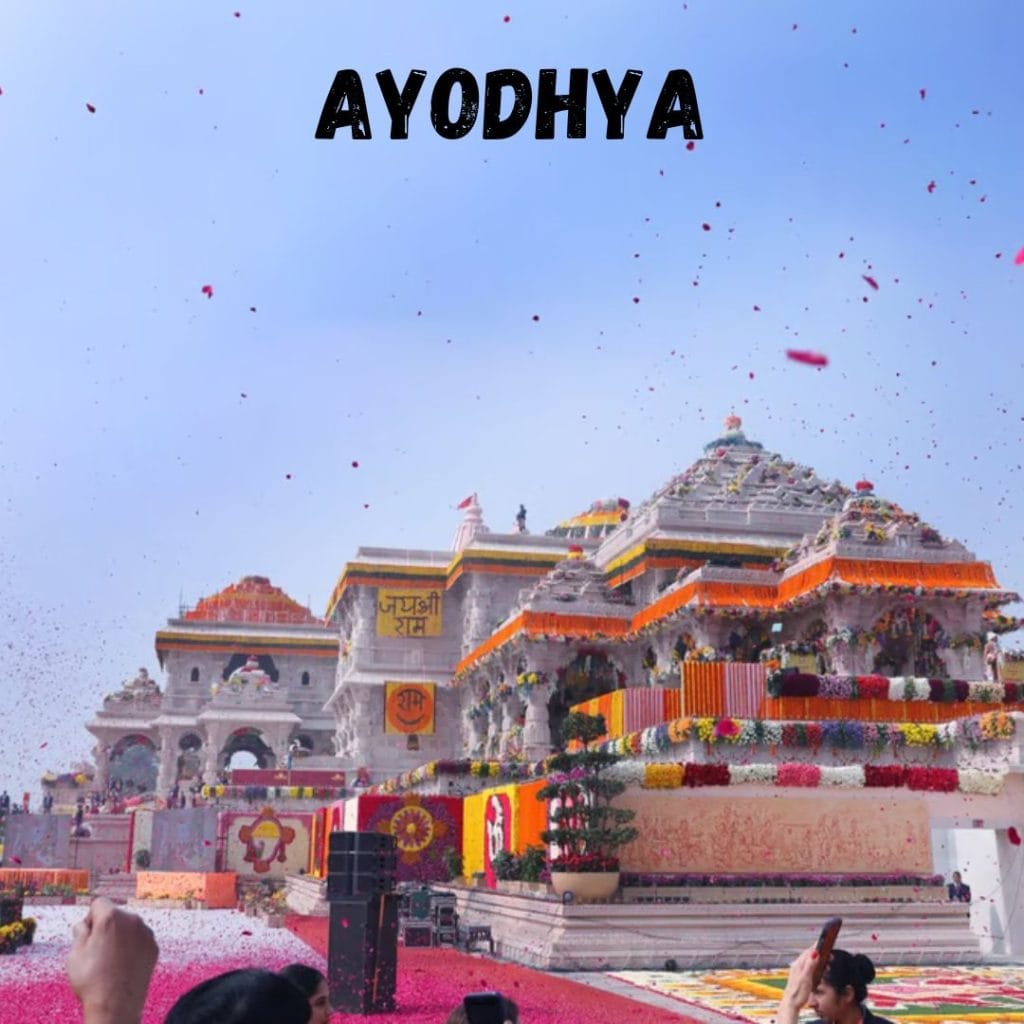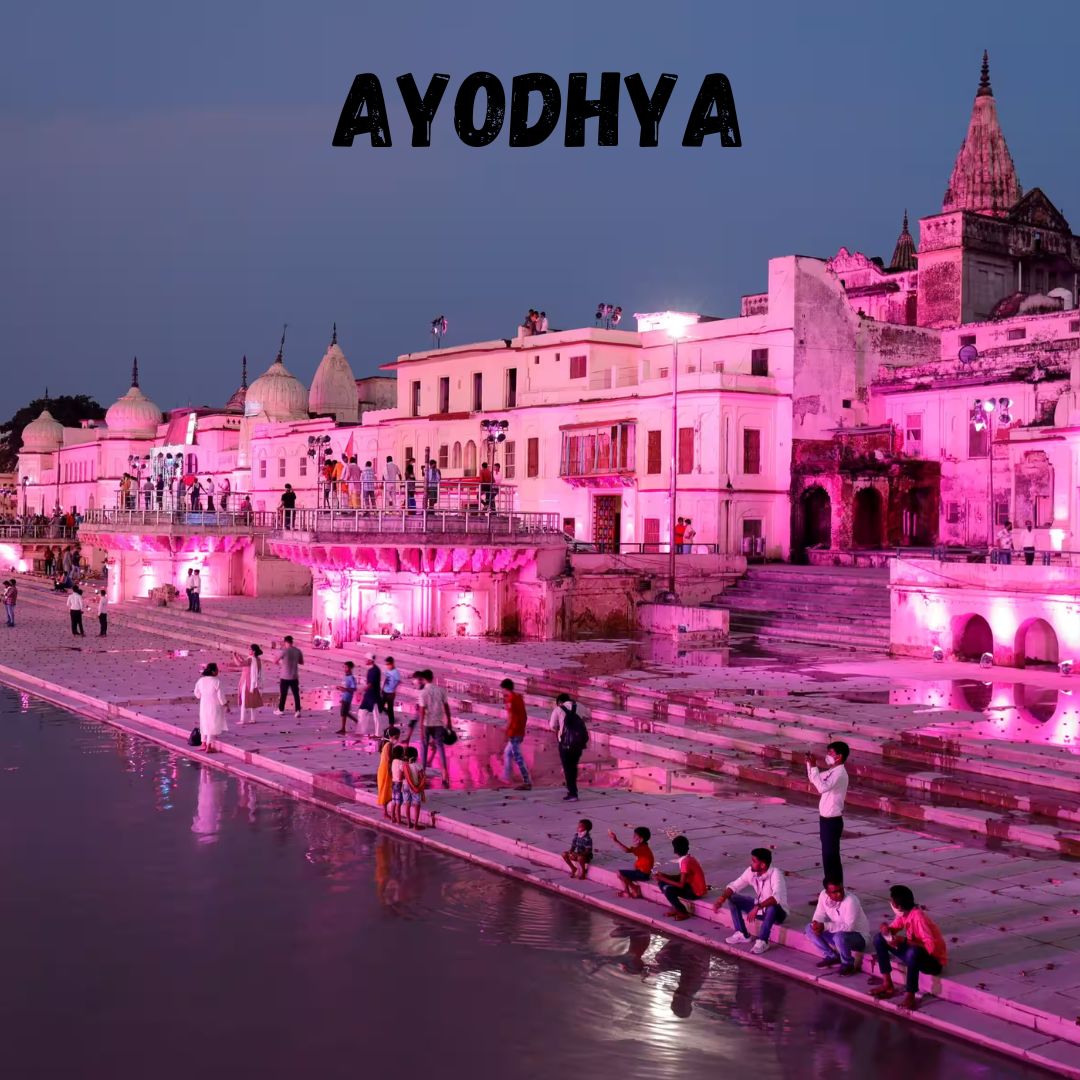Sacred Temples & Religious Sites in Ayodhya
Ayodhya, the ancient city on the banks of the Saryu River, is not just a destination—it’s a deeply spiritual journey. As the birthplace of Lord Ram, Ayodhya draws millions of pilgrims, saints, scholars, and spiritual seekers from across the world. The city’s sanctity is rooted in the Ramayana and sustained through centuries of faith, rituals, and devotion. From monumental temples to lesser-known shrines with centuries-old legends, Ayodhya is a mosaic of divine energy, mythology, and living tradition.
At Tripcosmos.co, we guide you through Ayodhya’s sacred geography, ensuring you experience every meaningful site with depth, reverence, and clarity. Here’s the ultimate pilgrim’s guide to the most important temples and religious landmarks in Ayodhya.

Sacred Temples & Religious Sites in Ayodhya
Shri Ram Janmabhoomi Mandir – The Epicenter of Faith
The Ram Janmabhoomi Mandir, the most sacred temple in Ayodhya, is believed to be built on the exact spot where Lord Ram was born. The newly constructed temple, a marvel of traditional Hindu architecture, has become a global symbol of devotion, resilience, and dharma.
- Main Deity: Ram Lalla (infant form of Lord Ram)
- Highlights: Marble pillars, intricate carvings, and a grand sanctum
- Pilgrim Tip: Visit early morning or during evening Aarti for a less-crowded, immersive experience
Hanuman Garhi – The Protector’s Abode
Perched atop a small hill, Hanuman Garhi is one of the most significant temples dedicated to Lord Hanuman. Devotees believe that visiting Hanuman Garhi before Ram Janmabhoomi blesses the entire pilgrimage.
- Features: 76 steps leading to the shrine, monkey-filled courtyards, peaceful surroundings
- Deity: Hanuman seated with folded hands guarding Ayodhya
- Legend: Hanuman resided here to protect the city in Lord Ram’s absence
Kanak Bhawan – The Golden Palace of Sita and Ram
Located near Hanuman Garhi, Kanak Bhawan is said to be a gift to Sita from Queen Kaikeyi after her marriage. It’s considered the personal palace of Lord Ram and Sita, radiating an aura of harmony and love.
- Idols: Ram and Sita adorned in gold jewelry, standing together
- Ambience: Peaceful, musical chants, vibrant interiors
- Pilgrim Tip: Attend the Bhog Aarti and experience traditional devotional music
Ram Ki Paidi – Sacred Ghats of the Saryu
Stretching along the Saryu river, Ram Ki Paidi is a series of ghats where pilgrims take holy dips to cleanse sins and honor Lord Ram.
- Rituals: Daily bathing, evening Aarti with lamps and chants
- Events: During Deepotsav, over a million diyas are lit here
- Must-Do: Boat ride during sunrise and witnessing Saryu Aarti in the evening
Guptar Ghat – The Divine Exit of Lord Ram
Located a little away from the main temple complex, Guptar Ghat is believed to be the spot where Lord Ram took Jal Samadhi (divine disappearance into the Saryu river).
- Temples Nearby: Sita-Ram Mandir, Chakrahari Mandir
- Atmosphere: Quiet, perfect for meditation and deep prayer
- Ideal For: Performing ancestral rituals or quiet reflection
Nageshwarnath Temple – The Ancient Shiva Shrine
Founded by Kush, son of Lord Ram, the Nageshwarnath Temple is one of the oldest shrines in Ayodhya. It is dedicated to Lord Shiva, revered here as the protector of Ayodhya.
- Festivals: Attracts huge crowds during Shivratri
- Deity: Nageshwar, one of the Jyotirlinga avatars
- Historical Note: The only temple said to have survived multiple foreign invasions
Treta Ke Thakur – Monuments of Treta Yuga
This sacred temple stands at the site where Lord Ram is said to have performed the Ashwamedha Yagna. The black stone idols here are believed to be over 5,000 years old.
- Deities: Ram, Sita, Lakshman, Bharat, Shatrughan, Hanuman
- Access: Open on special occasions like Ekadashi
- Architecture: Simple exterior, spiritually charged interiors
Mani Parvat and Sugriv Parvat – Legends in Stone
Both these mounds are associated with the Ramayana era, each holding sacred significance.
- Mani Parvat: Believed to be a part of Sanjeevani mountain that fell during Hanuman’s journey
- Sugriv Parvat: Said to be the place where Sugriv stayed during his time in Ayodhya
- Views: Offers panoramic views of Ayodhya, ideal for contemplative moments
Chhoti Devkali Mandir – Temple of Goddess Kali
Dedicated to Goddess Devkali, the kuldevi (family deity) of Sita, this temple is an important Shakti Peetha in Ayodhya.
- Festivals: Navratri celebrations with grand Durga puja
- Pilgrim Tip: Visit during early morning hours to witness traditional rituals
Valmiki Ramayan Bhawan – A Cultural Landmark
More than a temple, this site is a cultural center that showcases artistic depictions of the Ramayana. Visitors can see murals, scripts, and dioramas narrating the life of Lord Ram.
- Features: Quiet library, multimedia storytelling, exhibitions
- Ideal For: Families, students, and cultural enthusiasts
Sita Ki Rasoi – The Divine Kitchen
An ancient kitchen believed to have been used by Sita, this small yet sacred spot has been preserved as a symbol of devotion, service, and household sanctity.
- Offerings: Display of utensils, clay stoves, and traditional kitchen tools
- Deities: Ram, Sita, Lakshman, Bharat, and Shatrughan
- Unique Ritual: Women devotees often offer cooked food here as a symbolic gesture
Important Tips for Pilgrims Visiting Ayodhya
- Best Time to Visit: October to March; Ram Navami and Diwali (Deepotsav) are peak spiritual seasons.
- Dress Modestly: Wear traditional, comfortable clothing appropriate for temple visits.
- Plan Ahead: Use guided services from Tripcosmos.co to manage darshan queues, temple timings, and rituals.
- Local Etiquette: Remove footwear near temples, avoid photography where restricted, and maintain silence inside sanctums.
Nearby Sacred Extensions from Ayodhya
Enhance your spiritual journey by extending your pilgrimage to other religious sites in the region:
- Chitrakoot: Ramghat, Kamadgiri, Bharat Milap Mandir
- Prayagraj: Triveni Sangam, Akshaya Vat, Hanuman Mandir
- Varanasi: Kashi Vishwanath, Ganga Aarti, Sankat Mochan
- Naimisharanya: Chakratirth, Vyas Gaddi, Hanuman Garhi (another one)
All these destinations can be combined in a multi-day circuit with Tripcosmos.co’s North India pilgrimage packages.
Book Your Ayodhya Spiritual Tour with Tripcosmos.co
Our Ayodhya pilgrimage tours are designed to offer not just sightseeing but meaningful spiritual engagement. From morning darshan to sunset aartis, from guided temple walks to customized rituals, we handle everything with authenticity, respect, and personal care.
Embark on a journey to the soul of India. Walk the same streets where Lord Ram once walked, pray at the shrines that echo with millennia of devotion, and reconnect with your inner self through the sacred land of Ayodhya.





